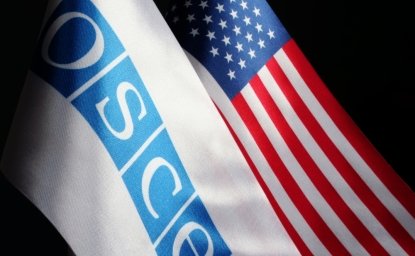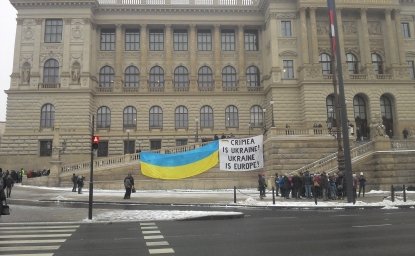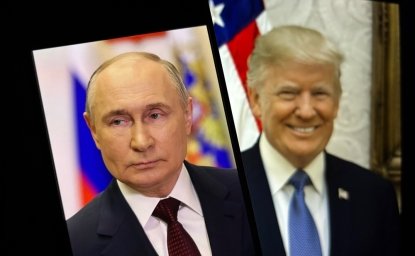Book Discussion: The Hawk and the Dove: Paul Nitze, George Kennan, and the History of the Cold War

At a book discussion on 17 November 2009, cosponsored by the Cold War International History Project and the Kennan Institute, Nicholas Thompson, Senior Editor of Wired and Fellow at the New America Foundation, discussed the relationship between two famous statesmen in his new book, The Hawk and the Dove: Paul Nitze, George Kennan, and the History of the Cold War. "This book is a personality-driven history of the Cold War," said Thompson, who is the grandson of Paul Nitze, and was inspired to write The Hawk and the Dove when he read a letter that Kennan sent to Nitze in 1999.
In this letter, Kennan wrote that he agreed with Nitze's most recent op-ed piece about the need to "unilaterally get rid of our nuclear weapons." Thompson saw that despite the two men's sometimes opposite positions throughout the Cold War, they shared a mutual respect and friendship with each other. The author presented an interesting portrait of the two men – the hawk and the dove. He saw the former as the driven practical bureaucrat who knew how to work the system, while he described the latter as the "genius visionary outsider."
Thompson's book begins in 1945, when Kennan worked as a diplomat at the U.S. Embassy in Moscow. Kennan had been warning the U.S. about Stalin for years, although his council fell on deaf ears until Germany's defeat and Russia's emergence as the other major victor of WWII. It was then that Kennan sent the "long telegram" outlining his policy of containment, which would serve as the keystone of U.S. Cold War policy for decades to come.
The two men first became familiar with each other in the late 1940s, and then in 1949 Nitze was hired as Kennan's deputy in the State Department's Policy Planning Staff. That fall, the Soviet Union set off an atomic bomb, an event which would set the "political trend of Kennan and Nitze's careers" for the rest of the Cold War, according to Thompson. Kennan wrote a 79-page memo arguing against building a hydrogen bomb, while Nitze offered a simple cost-benefit calculation: "If the Soviet Union builds a hydrogen bomb, will the U.S. be in a worse position? Yes. Therefore, we should build one." Thompson describes how Nitze's argument won the day, and was the beginning of Nitze's reputation as a hawk for the build-up of America's weapons arsenal.
Nitze famously wrote NSC 68, a National Security Council document that outlined the U.S. strategy for the next twenty years of the Cold War, placing great importance on building up the military strength of the U.S. However, Nitze's position was somewhat changed in the 1980s. Thompson described how the previous decade featured Nitze as a master of all the familiar nuclear abbreviations: ABMs, MIRs, SALT, etc. But then despite being known as a hawk, Nitze worked throughout the Reagan Administration to lower arms stockpiles and halt the escalation of arms buildup between the U.S. and the Soviet Union. At the same time, Kennan, the "outsider," was busy winning Pulitzers and writing articles arguing for reducing nuclear weapons.
Indeed, Thompson described both men as excelling in the field of foreign policy with their foresight and political astuteness. Kennan was one of the few to understand early on that North Vietnam was fighting for nationalism rather than communism, and his testimony in Congress to that effect legitimized much of the criticism against the war. Meanwhile, one of Nitze's biggest endeavors involved the famous "walk in the woods" with Soviet Ambassador Yuli Kvitsinsky in 1982; while at a nuclear missiles negotiation in Geneva, the two men walked into the woods to hash out a deal for significant arms reductions on both sides. Unfortunately, the deal was rejected by both D.C. and Moscow, and Thompson remarked that Nitze felt it to be one of his biggest career disappointments.
Nevertheless, Nitze and Kennan have both been hailed after the fall of the Soviet Union as two important figures who contributed to a peaceful end to the Cold War. Thompson concluded in Nitze's own words: "We won the Cold War because Kennan came up with the right ideas, and I made them practical."
Blair Ruble, Director, Kennan Institute
Author

Kennan Institute
After more than 50 years as a vital part of the Wilson Center legacy, the Kennan Institute has become an independent think tank. You can find the current website for the Kennan Institute at kennaninstitute.org. Please look for future announcements about partnership activities between the Wilson Center and the Kennan Institute at Wilson Center Press Room. The Kennan Institute is the premier US center for advanced research on Eurasia and the oldest and largest regional program at the Woodrow Wilson International Center for Scholars. The Kennan Institute is committed to improving American understanding of Russia, Ukraine, Central Asia, the South Caucasus, and the surrounding region through research and exchange. Read more

Explore More
Browse Insights & Analysis
The OSCE is a Good Value for America

Infographic | Russia's Illegal Annexation of Crimea

Russia’s Indigenous Communities and the War in Ukraine
